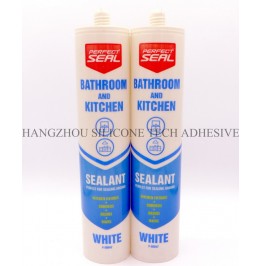Applying bathroom sealants requires careful handling to avoid skin irritation, chemical exposure, and application errors. The right gloves provide protection while maintaining dexterity. Below are detailed factors to evaluate when choosing gloves for sealant work.

Bathroom sealants often contain solvents, polymers, and additives that can irritate skin or cause allergic reactions. Gloves must resist penetration by these chemicals to ensure safety. Nitrile gloves are commonly preferred for their chemical resistance, especially against oils, acids, and some solvents found in sealants. They provide a reliable barrier without compromising flexibility.
Latex gloves, while affordable, may not offer sufficient protection against certain sealant components, such as aromatic hydrocarbons. Prolonged exposure can lead to dermatitis or chemical burns. Vinyl gloves are less durable and prone to tearing, making them unsuitable for tasks requiring precision or prolonged contact with sealants.
The thickness of gloves impacts both protection and comfort. Thicker gloves (6–8 mils) offer better resistance to abrasions and chemical splashes but may reduce tactile sensitivity. For detailed work, such as applying sealant along tight corners, opt for gloves with moderate thickness (4–5 mils) that balance protection and dexterity.
Durability is critical when working with abrasive surfaces or sharp tools. Gloves with reinforced fingertips or textured palms improve grip and resist wear, reducing the risk of tears during application. Avoid gloves that stretch excessively, as they may become loose and compromise protection.
Sealant application often involves repetitive motions and extended periods of wear. Ill-fitting gloves can cause hand fatigue, reduced grip, and discomfort. Choose gloves that fit snugly without restricting movement. Loose gloves may slip off or allow chemicals to seep inside, while overly tight gloves restrict blood flow and cause numbness.
Gloves with ergonomic features, such as contoured fingers and pre-curved shapes, mimic natural hand movements. This reduces strain during tasks like smoothing sealant beads or holding applicator guns. Some gloves include wrist cuffs or adjustable straps to secure the fit and prevent slippage.
Breathability is another factor to consider. Gloves made from breathable materials, such as perforated nitrile, reduce sweat buildup and improve comfort during long projects. Moisture accumulation inside gloves can lead to skin irritation or bacterial growth, undermining their protective function.
Bathroom sealant application demands precision, especially in tight spaces like shower corners or around fixtures. Gloves that impair finger movement can result in uneven beads, wasted material, or the need for rework. Thin, flexible gloves (2–3 mils) are ideal for tasks requiring fine motor skills, such as tooling sealant edges or cleaning excess material.
A secure grip prevents tools from slipping and ensures consistent pressure during application. Textured gloves, either fully coated or with patterned fingertips, improve traction on wet or slippery surfaces. Some gloves feature micro-roughened surfaces or silicone dots for added friction without compromising flexibility.
Color contrast can also aid precision. Gloves in bright colors, such as blue or green, make it easier to spot residue or drips on surfaces, reducing the likelihood of missed spots. This is particularly useful in light-colored bathrooms where sealant smears may blend into tiles or grout.
Gloves used for sealant application should meet industry safety standards to ensure reliability. Look for certifications like EN 388 (mechanical risks) or EN 374 (chemical protection), which indicate resistance to abrasions, cuts, and specific chemicals. Compliance with these standards guarantees that gloves have undergone rigorous testing for performance and durability.
After use, gloves contaminated with sealant chemicals must be disposed of properly to avoid environmental harm. Single-use gloves should be placed in sealed bags before disposal. Reusable gloves require thorough cleaning with soap and water, followed by inspection for tears or degradation. Always replace gloves at the first sign of wear to maintain protection.
By prioritizing material compatibility, fit, dexterity, and safety compliance, users can select gloves that enhance both efficiency and protection during bathroom sealant projects.
Copyright 2019 by Hangzhou Silicone Tech Adhesive Co., Ltd. All rights reserved.
Bathroom Sealant | Acrylic Sealant | Dow Corning 795 | Aquarium Sealant | Dow Corning 732 | Clear Silicone Sealant | Polysulfide Sealant | Glazing Sealant | Mirror Sealant | IG Sealant
Powered by Onepound